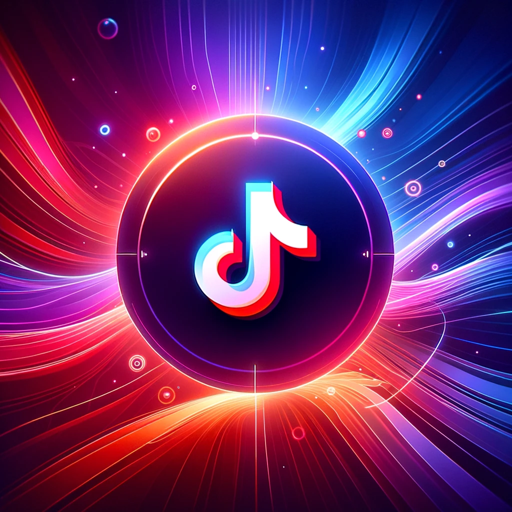LoRA Captioner-AI-powered captioning tool
AI-Powered Image Captioning Made Simple
Label these images
Related Tools
Load More
Video Captions
Transcribes YouTube videos into text with precision and extra features.

LEGENDAS AUTOMÁTICAS
Gerador de legendas para Instagam treinado pela Copfy.

Video Transcript Reader
Reads YouTube video transcripts from provided link

Short Video Viral Caption
TikTok Caption Generator: based on millions of weekly updated viral videos, crafts engaging and viral captions for videos.

LD Caption Generator
Converts deal information into a caption 40-50 words long.

VideoCaption
Search and synthesize data from Youtube, enables chat with Youtube, asking questions, create chapters, and summarize its content.
20.0 / 5 (200 votes)
Introduction to LoRA Captioner
LoRA Captioner is a specialized tool designed to facilitate the creation of high-quality captions for datasets used in machine learning, particularly in image generation and recognition tasks. Its core function is to generate structured, consistent, and detailed captions that help train models effectively. By breaking down the captioning process into a methodical structure, LoRA Captioner ensures that every aspect of an image is described in a way that maximizes the learning potential of the model being trained. This structured approach is particularly useful when training models to recognize specific styles, objects, or concepts, allowing for nuanced control over what the model learns. For example, in training a model to recognize a specific artistic style, LoRA Captioner would help by providing consistent descriptions of the style, perspective, and notable details across all images, ensuring the model learns to associate these elements correctly.

Main Functions of LoRA Captioner
Structured Captioning
Example
When training a model to recognize a specific character design in anime, LoRA Captioner ensures that captions for each image follow a consistent structure, such as describing the type of image, the perspective, actions, subject details, and background elements.
Scenario
A user is creating a dataset to teach a model to generate anime characters in a specific style. Using LoRA Captioner, they ensure every caption is structured consistently, so the model learns to recognize and reproduce that style accurately.
Variable Control
Example
In a dataset meant to teach a model about different types of flowers, LoRA Captioner helps by describing attributes like 'pink petals' and 'tall stems' across all relevant images, allowing these characteristics to be manipulated as variables in model prompts.
Scenario
A botanist is training a model to identify different species of flowers. By consistently captioning each flower with detailed descriptions of its characteristics, the model can later generate specific types of flowers by adjusting these variables in prompts.
Tag Consistency and Repetition Avoidance
Example
LoRA Captioner aids in maintaining tag consistency across a dataset, ensuring that similar elements are described using the same terminology, and avoiding unnecessary repetition that could skew model training.
Scenario
A graphic designer is building a dataset to train a model on different lighting conditions in photography. LoRA Captioner ensures that every instance of 'soft lighting' or 'backlighting' is consistently tagged, preventing the model from misinterpreting these conditions due to inconsistent labeling.
Ideal Users of LoRA Captioner
Machine Learning Engineers and Researchers
These users are deeply involved in training machine learning models, especially for tasks related to image recognition and generation. LoRA Captioner is ideal for them because it provides a structured approach to captioning datasets, which is crucial for training models that require a high degree of specificity and consistency in the data.
Artists and Designers Working with AI Tools
Artists and designers who are experimenting with AI models for creative work benefit from LoRA Captioner by using it to train models on specific styles or concepts. The tool helps them create detailed and consistent datasets, ensuring the AI models produce outputs that align with their creative vision.

How to Use LoRA Captioner
Visit aichatonline.org for a free trial without login, also no need for ChatGPT Plus.
Start by navigating to aichatonline.org where you can access LoRA Captioner without the need to log in or subscribe to ChatGPT Plus. This site offers a user-friendly interface for your captioning needs.
Upload your image dataset for captioning.
Once on the platform, upload the images you want to caption. Ensure your dataset is well-organized, as this will help streamline the captioning process.
Follow a structured captioning format.
Adopt a consistent structure for your captions, focusing on variables such as type/perspective, action words, subject descriptions, notable details, and background context. This consistency aids in better model training.
Leverage global tags for uniform elements.
Use global tags for elements common across your dataset. This helps in associating these tags with specific concepts during training. Utilize specific tags to fine-tune how the model interprets different elements in your images.
Review and refine captions for consistency and clarity.
After initial captioning, review your captions to ensure they are consistent and clearly structured. This step is crucial for optimizing model training outcomes.
Try other advanced and practical GPTs
Mermaid Chart: diagrams and charts
AI-powered diagram creation tool

Software System Design GPT
AI-driven system design assistant

Mermaid Diagrammer
AI-powered diagramming made easy.

Insightful Infographics
AI-powered insights for your data

Jones Blackwood
Elevate your photography with expert AI guidance.

Web Browsing Ninja
AI-driven insights at your fingertips

DELL-E Chat Creator
AI-powered creativity at your fingertips

Literature & Literary Expert
AI-powered literary analysis and insights

Artificial General Intelligence (AGI) GPT
AI-powered intelligence for every task

Tercuman Ceviri Turkce Turkish English Translator
AI-powered translations for Turkish and English

Turkish - English Translator With Grammar Support
AI-Powered Turkish-English Translations with Grammar Support

Correção de Textos. (pinnamarcos)
AI-Powered Text Correction Tool

- AI Training
- Model Optimization
- Image Tagging
- Dataset Preparation
- Manual Captioning
Common Questions About LoRA Captioner
What is LoRA Captioner primarily used for?
LoRA Captioner is designed for manually captioning image datasets, especially in contexts where precise control over training variables is needed, such as in AI model training for image recognition or generation.
How does LoRA Captioner enhance AI model training?
By enabling detailed and consistent captions, LoRA Captioner helps models learn associations more effectively. The structured captions act as variables, which can be manipulated during prompts to influence the model’s output.
Can I use LoRA Captioner for large datasets?
LoRA Captioner is ideal for smaller datasets due to the manual nature of the captioning process. While it offers high-quality results, captioning large datasets may be time-consuming.
What kind of structure should I use in my captions?
It's recommended to use a structured format that includes type/perspective, action words, subject descriptions, notable details, and background context. This approach helps maintain consistency across your dataset.
Is it necessary to use specific tags in LoRA Captioner?
Yes, specific tags are crucial for fine-tuning how the model interprets different elements in your images. They help in reducing the impact on broader classes and ensuring precise associations during training.